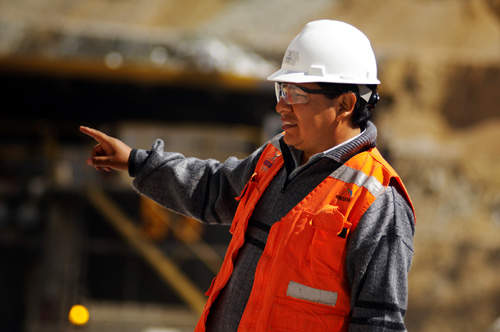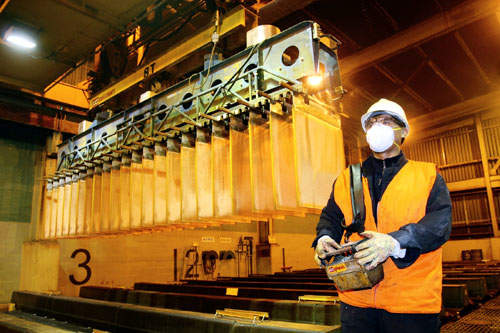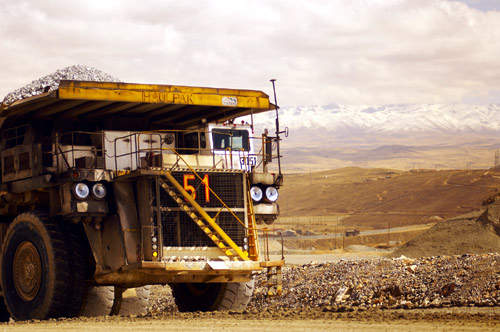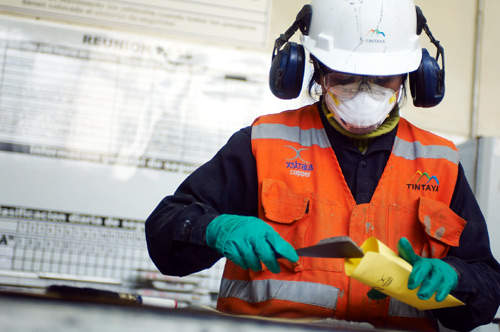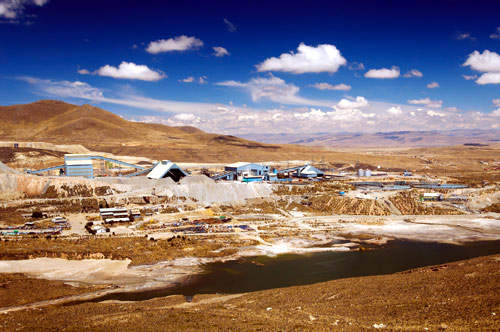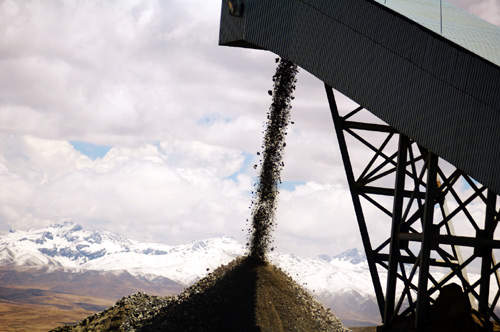Tintaya belongs to Xstrata’s newly formed Southern Peru division, which also includes the Antapaccay, Coroccohuayco and Las Bambas projects. Feasibility studies completed in the third quarter of 2009 confirmed the potential of the region to produce over 600,000 tons of copper annually within the next five years.
An open pit copper mining and processing operation, the Tintaya mine is located at an elevation of 4,100 metres in the Yauri district of Espinar Province, Cusco region, southern Peru.
Tintaya commenced production in 1985, and was acquired by BHP Billiton in January 1996 following its purchase of Magma Copper Company. Xstrata bought Tintaya from BHP in 2006 for US$750m.
The mine produces 200,000t per day of ore and waste at a yearly ratio of about 85 million tons. The orebody presents a mineralisation of copper sulphides and copper oxides.
The mine produces around 120,000 tons of copper in cathode and concentrate form each year. Xstrata reported recently that it had extended the mine’s life out to 2018.
Geology and reserves
The Tintaya orebody is defined as a copper skarn deposit, which consists of Cretaceous sedimentary rocks intruded by monzonitic plutons, with bornite, chalcopyrite, chalcocite and copper oxides as the main copper bearing minerals.
As of June 2009, the Proved and Probable Ore Reserves include ten million tons at 1.0 % Cu of Sulphide and Oxide material stockpiled for treatment during the remaining of the life of mine. A 38% increase to the Antapaccay mineral resources was announced in August 2009. The mineral resource of the orebody was estimated at 720Mt graded at 0.56% Cu.
Ore processing
Tintaya’s processing operation comprises both a copper concentrator and a solution extraction/electrowinning (SX/EW) processing plant. Product is trucked to the port of Matarani on the Arequipa region coast, and then shipped to customers worldwide.
Production
The mine produced around 81,700t of copper in concentrate form, a decline of 2% over the previous year due to fall in mill throughput. Copper cathode production stood at 25,500t, a decline of 7%.
Xstrata reported that EBIT had increased slightly to $225m at Tintaya during 2007 as the stronger commodity price environment in the first half of 2008 was offset by lower sales, production and higher costs.
Lower ore grades and poor weather during the first half affected the volume of sulphide and oxide ore mined, worsened by high clay content ores, with a consequential negative impact on concentrator productivity. Copper in concentrate production decreased by 17% and copper cathode production was 28% lower.
Gold in concentrate production also decreased compared to the first half of 2007, as a result of lower head grades. This contrasts with more bullish statements made by the company early last year which pointed to a 5% rise in copper production at Tintaya in 2007 compared to 2006. Xstrata announced strong production in the second half of 2008. Due to lower oxide ore mined, the production of copper cathode from the plant declined by 24% as compared to the previous year. Efforts to increase truck productivity and reduce haulage distances were also completed.
Tintaya is also examining ways to develop the Coroccohuayco orebody, 10km southeast of the Tintaya operation, as part of the strategy to maintain longer-term copper production from Tintaya at in excess of 100,000 tons per annum. A JORC compliant Mineral Resource estimate was published for Coroccohuayco in March 2008 of 90 million tons at a grade of 3.10% copper and 0.30 grams per ton gold, using a 1.5% copper cut-off grade.
Xstrata Copper completed a feasibility study in the third quarter of 2009 at the Antapaccay orebody, 10km south-west of the Tintaya operation. The study was planned as an independent operation that would benefit from certain synergies with Tintaya.
According to the study, an estimated investment of $1.4bn will be required to construct an operation that will produce 160,000t of copper per annum. By December 2009, the Environmental and Social Impact Assessment was finalised and filed. Final approvals for the project are expected during the first half of 2010.
The potential of the Coroccohuayco deposit was further evaluated in 2009. A drilling campaign began in November 2009 following approval of an environmental impact declaration.
During 2009, a feasibility study was completed which indicated production of 400,000t of copper per year for an initial five years for an estimated cost of $4.1bn.

